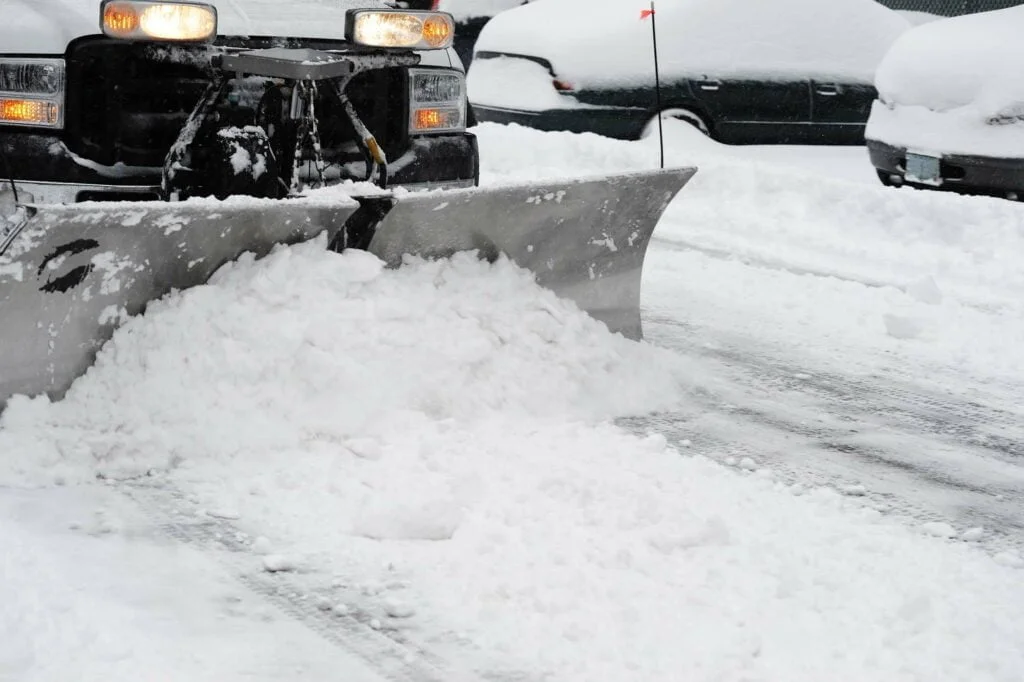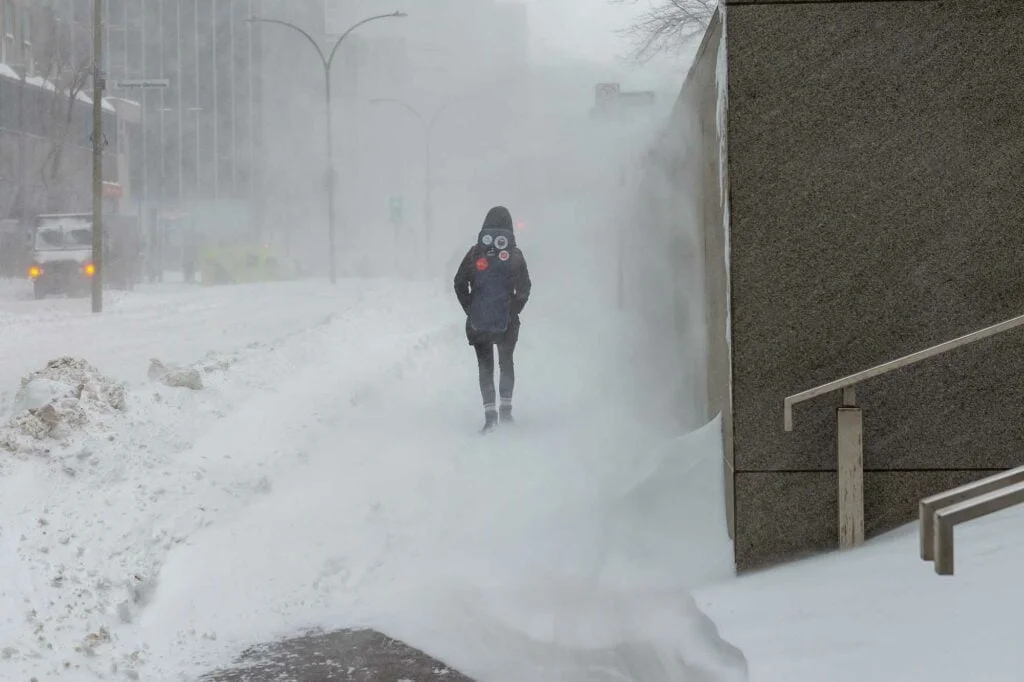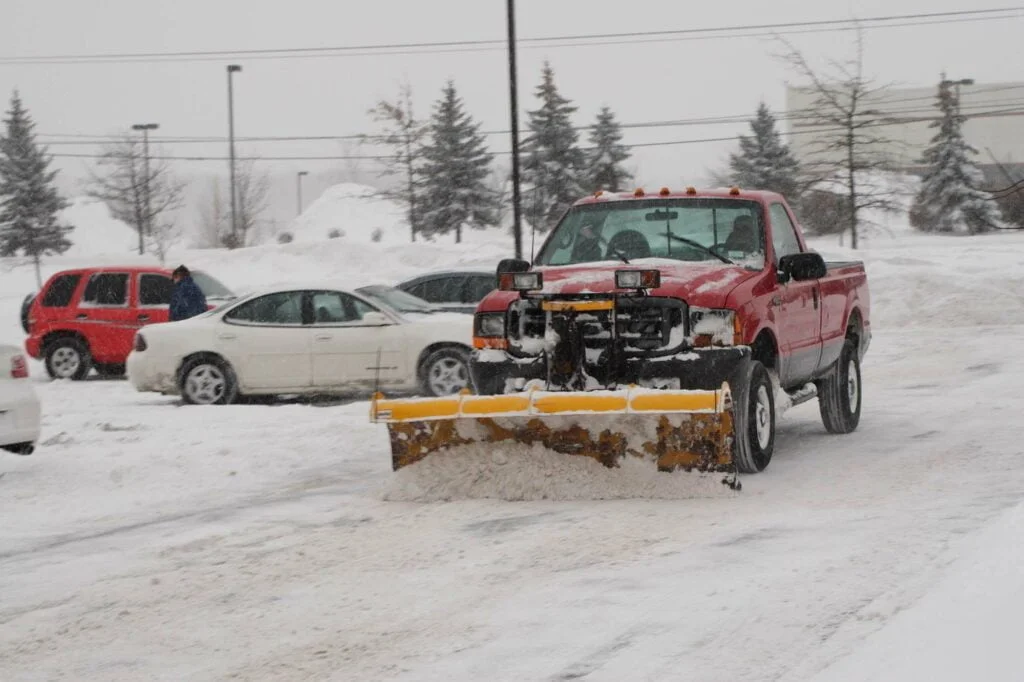It happens every winter. Drivers are caught off guard by icy roads and a sudden wind gust, the arrival of cold air, and a burst of snow so heavy you can’t see the car in front of you. It’s called a snow squall and is more common than people think. So what is this dangerous winter event, and why do we repeatedly keep making the same mistakes, and the accidents keep happening?
It’s due to the transient nature of snow squalls. As quickly as they strike, they end — so they’re quickly forgotten, unlike a blizzard. The disruption is temporary, and things move again like nothing ever happened within an hour or two. Also, like a thunderstorm, they’re hard to predict. But meteorologists are doing something about that, too (keep reading to learn how meteorologists are working to provide better warnings!)
What is a Snow Squall?
Snow squalls are dangerous winter weather events that often catch people off guard due to their sudden nature. Many people in the Midwest or the Northeast US will experience one at some point in the winter. While short-lived, they should be treated with the same caution as a snowstorm or a blizzard.
Heavy snowfall is the hallmark of the snow squall, but other factors, such as cold temperatures, high winds, and blowing snow, contribute to their dangerous nature. They often form along strong cold fronts in the winter, and a sudden drop in temperatures might also occur.
“Thundersnow” can occur during a powerful squall in rare cases. Snow squalls are convective like a squall line thunderstorm, so the same meteorological rules apply.
What Does a Snow Squall Look Like?
It’s better to see a snow squall than read about it, so we’ve included a video showing how crazy it can get. The video was shot by 9NEWS videographers in Colorado, complete with thunder and lightning.
[embedyt] https://www.youtube.com/watch?v=57_ZKwYAY14[/embedyt]What is a Whiteout?
A whiteout is a snow squall that reduces visibility to zero. While squalls can reduce visibility to around one mile, actual whiteout conditions make it difficult to see beyond a few feet in front of you. They can be incredibly disorienting and put drivers and those caught outside in extreme danger.
How long does a snow squall last?

Snow squalls usually last less than an hour, and snow accumulations are typically only a few inches. The rate at which the snow falls causes problems because roads go from clear to snow-covered in minutes, and visibility drops within seconds due to the combination of snow and wind, giving drivers little time to adapt. Their quick and intense nature, much like severe thunderstorms, prompted the National Weather Service to introduce a new warning type, the Snow Squall Warning.
When do snow squalls occur?
Snow squalls most commonly occur during December through March during the passage of an arctic cold front and frequently within bands of lake effect snow off the Great Lakes in December and January. Major cities like Chicago, Detroit, Indianapolis, Cleveland, Pittsburgh, Philadelphia, New York City and Boston are also at risk. They happen in the southern portions of the US; however, this is extremely rare. They also occur in the Midwest US, especially near the Rockies.
Occasionally, heavy snow squall bands will set up like lines of thunderstorms on a summer day. They can occur at any time of the day. However, they are much more dangerous at night as visibility is reduced by both darkness and snow.
Is it dangerous to walk in a snow squall?

Walking is probably your safest method of transportation in snow squalls, but with low visibility, it is still dangerous. Add to this the fact that sidewalks and macadam are often untreated and may be icy, and it’s better that you stay inside until conditions improve.
Types of Weather Warnings for Snow Squalls
Until recently, there was no specific warning for snow squalls. However, after several high-profile significant accidents, the National Weather Service created a new warning type called the Snow Squall Warning.
A snow squall warning works the same way as severe thunderstorm warnings and is issued for areas ahead of the squall. The hope is that people will take snow squalls more seriously, alter their behavior accordingly, and stay off the roads. Those in the area will also receive a wireless emergency alert on their smart phones to ensure everyone in harm’s way is notified.
What to do if you’re caught in a snow squall
The best thing to do is stay indoors or seek shelter before the squall hits. Conditions will deteriorate rapidly once the snow starts. If the forecast calls for snow squalls, delay travel until after the threat has passed. Stay tuned to local media and National Weather Service alerts for the latest news and possible warnings.
If you have to go, ensure you have a full tank of gas and items to help if you get stuck, such as shovels, salt, and kitty litter (yes, it does work!).
If the squall catches you off guard, get off the road as soon as possible. Slow down. Speed is your enemy in snowy conditions, and this is especially important if you’re on a highway.
Apply the brakes carefully and slowly if you need to step, and turn your headlights on and foglights if you have them. Keep as much distance as possible from the car in front of you. Gusty winds and heavy snowfall will add even more complexity, so if you can stop somewhere safe on a highway shoulder a good distance from traffic, do so.
Stay inside your vehicle and wait for the squall to pass. If you must walk to seek shelter, choose a shelter close by — however, staying in your car is the best thing to do. If you get stranded, keep warm by keeping all windows shut tight until help arrives.

Wrapping Up
Snow squalls can be dangerous and sneak up on people, but they’re just snowstorms. They come with the same precautions: stay home if possible, drive slowly and carefully if you must go out, and know that snow removal services may not arrive for a while.

